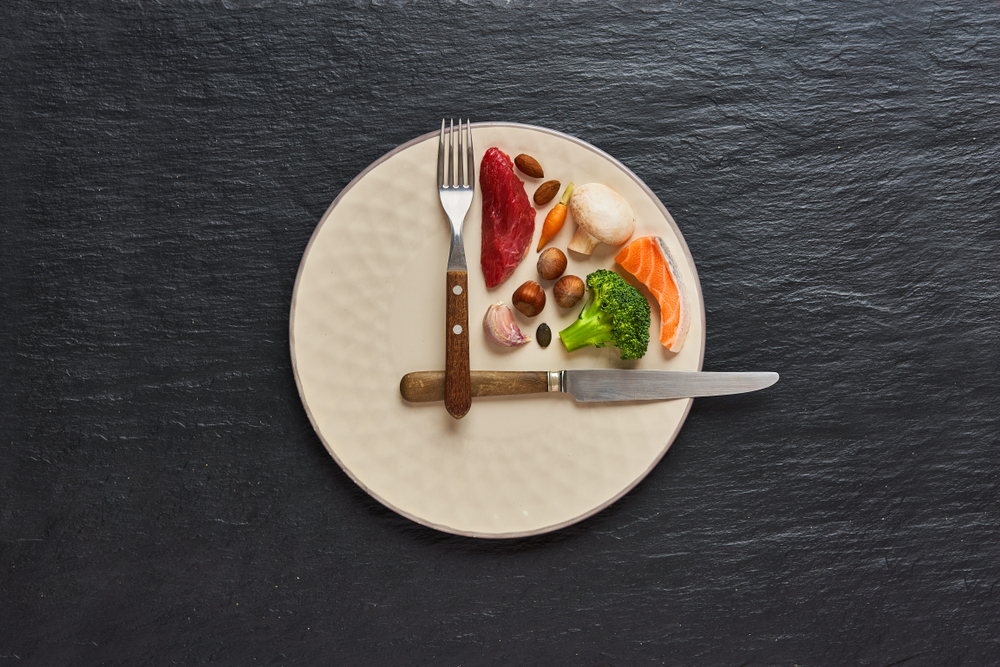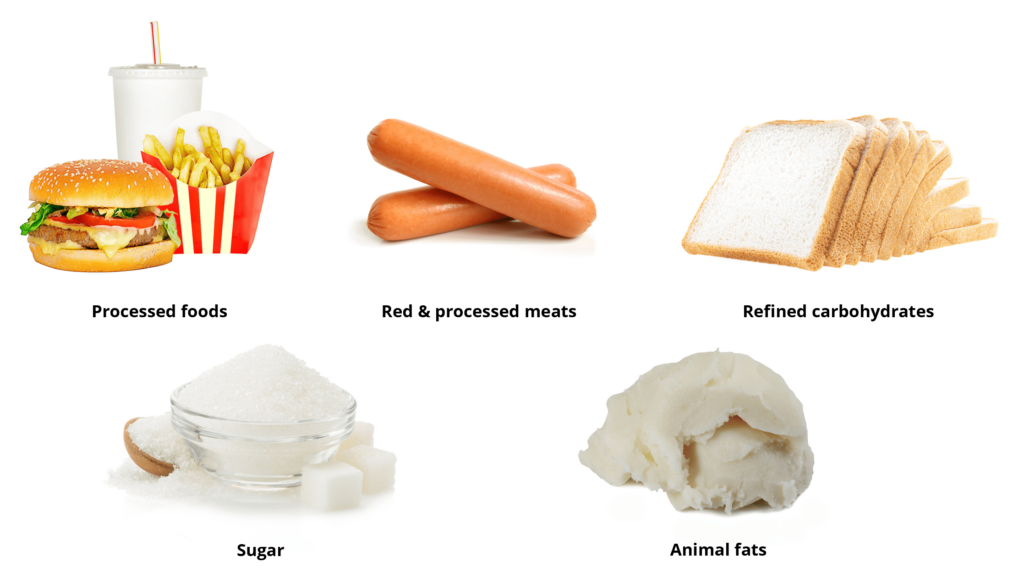Intermittent fasting

Intermittent fasting involves cycling between periods of fasting and eating and there are a few different methods of doing this.
You may have heard of the 5:2 or 16:8 diets, these are both based on intermittent fasting principles. Fasting allows the body to use stored energy by burning excess body fat resulting in weight loss.
The science behind it
When we eat, we take in more energy from food than can immediately be used by the body. Insulin is produced when we eat so it can break down the carbohydrate into glucose and be used by the cells for energy, or it will be stored in the liver or muscle as glycogen.
When we need a quick source of energy or the body isn’t getting glucose from food, glycogen released from the liver is broken down into glucose and sent into the bloodstream.
However, there is limited storage space for glycogen and once stores are full, the liver will turn excess glucose into fat. Some of this will be stored in the liver, or it will be exported to other fat deposits in the body.

When in a fasted state, insulin levels fall which signals the body to start burning stored energy. Blood glucose levels will fall so the body needs to use the stored glucose for energy, it will use the glycogen in the liver first as that is the most accessible. After this has depleted, the body will start to break down fat to get the energy it needs.

So, the body is in either of two states — the fed or fasted state. Either we are increasing our stores of food energy, or we are decreasing the stores by burning through stored energy. If these are balanced, then there should be no change in weight.
If, however, we eat from when we wake to when we go to bed, our body is continually in the fed state. This means the body is getting all of its energy from the food we are eating, storing anything extra and not burning through any of its stored energy.
Intermittent fasting basically allows our body to use its stored energy.
Different methods of fasting
There are a number of different diets that incorporates the principles of intermittent fasting. The two most well-known are:

You will have 2 days where you have a very low-calorie intake, usually, the target is 500–600kcals, and on the other 5 days, you will follow normal healthy eating guidelines.

You will fast for 16 hours of the day and only have an 8-hour period of the day where you follow healthy eating guidelines for your meals and snacks.
Intermittent fasting can help you lose body fat and inches as it works out to an approximately 25% total calorie deficit for the week.
However, you do need to be mindful of the foods you are eating in the fed state, if you overeat or are eating high-calorie foods then you won’t see the weight reduction you are looking for.
Are there any side effects?
You may experience some headaches and constipation but you can limit the risk of this by making sure you are drinking plenty of fluids on your fasting days and eating plenty of vegetables and fruit. On the fasting days you can expect to feel hungry but remind yourself this is only for 2 days out of 7 and make the most of your calories.

What can I eat?
On the 5:2 diet, you can be a bit more flexible and choose which days to fast based on your schedule. The fasting days can be tough to begin with, but once you get into a routine your body will become used to it.
It’s a good idea to make your meals from scratch rather than relying on packaged food or ready meals. This means that you can control exactly what’s in it and also make some swaps to reduce your calories so that you can optimise your calories for the day.
On fasting days:
Planning is essential when you are fasting as you will want to get the most out of your calorie limit. There are many good resources such as Carbs & Cals or the 2-Day Diet that will give you evidence-based, nutritionally balanced meal ideas. They will be based around:

- Fluids: You’ll drink more fluids on fasting days to help alleviate some of the side effects you may experience. Aim for about 3 litres and this can include water, no sugar squash, tea and coffee.
- Protein: This will help you feel fuller so should be included where possible. Choose low-calorie lean proteins such as chicken, turkey, fish, beans and pulses.
- Vegetables: These are very low in calories and high in fibre so include them in every meal and snacks where possible. The fibre will help you to feel full and aid digestion.
For the days and times that you aren’t fasting, you will want to keep your diet in line with general healthy eating guidelines.
What foods should I avoid?
On an intermittent fasting diet, foods that you should avoid foods are:

- Refined carbohydrates: This means any carbohydrates that have been highly processed and contains little of the original grain. These foods will cause a rapid spike in your blood glucose levels and include white flour, white bread, white rice, white pasta and many breakfast cereals.
- Sugar: This includes simple sugars such as honey, table sugar and maple syrup but also any foods that contain added sugar such as sugary drinks, sweets, chocolates, ice cream, biscuits etc.
- Animal fats: Foods that contain animal fats such as butter, cheese, cream, dripping and lard should be avoided on a low-fat diet as they are high in saturated fat.
- Red & Processed meat: Processed meats such as bacon and sausages contain a lot of saturated fat. Stick to lean meats and cut any visible fats off meat.
- Processed foods: Processed foods are defined as any food that has been altered in some way during preparation. These include cakes, pastries, biscuits, fast food, pies, crisps and convenience foods. They are generally high in calories due to the amount of saturated fat and added sugar.
Top tips

Preparation is key to any weight management regime and intermittent fasting is no exception. Here are some tips to think about:
- Add flavour to dishes by adding garlic, herbs, spices, lemon juice or balsamic vinegar
- Look at different ways of cooking food to reduce the calories — steaming, poaching, baking or grilling are all much healthier ways of cooking food
- Add lots of vegetables to meals or have them as snacks — they are low in calories and will make you feel fuller
- Try to include lean protein with every meal, this could be chicken, turkey, eggs or fish
- Avoid alcohol as it contains a lot of calories and offers no nutritive value
- Leave gaps between your fast days as you’ll find them easier to manage
- Making foods from scratch is the best way to optimise your calories
- Physical activity is still a really important element of weight management so try to incorporate it into your non-fasting days
To download an intermittent fasting guide, click here.



Leave a Reply
You must be logged in to post a comment.